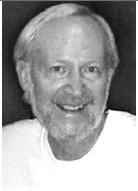Upon reflection, I now realize the reason I subconsciously chose my flat in London was because it was only a 10-minute walk to Sigmund Freud’s house in Hampstead. While other people laboriously haggle with estate agents in beautiful Richmond for a place near the Thames (an acoustically disastrous choice because it’s smack on the flat path into Heathrow, the busiest airport in Europe), or pay ridiculous prices for a matchbox to live in somewhere in the West End, my inner radar took me within a few blocks of the Freud house.
Freud spent the last few years of his life in Hampstead after friends convinced him in 1938 it was time to leave Vienna, after the Nazis had marched into Austria several months before. Hitler hated Freud and psychotherapists but loved astrologers. It’s just as well Adolph had those priorities, otherwise European history might have turned out very differently, because he consulted his astrologer on major battle plans, including the happily disastrous invasion of Russia.
The brown shirts burned all Freud’s books in the bonfires of Nazi repression, ego, and the primitive unconscious. Freud knew the paperhanger’s psychological profile all too well, so no wonder Sigmund’s books could be found right in the middle of the intolerant flames of the fascist id.
But, back to Hampstead and resting place of the holy grail of psychoanalysis — Freud’s famous couch. One item I brought with me to Japan from Hampstead two months ago was a commemorative teacup from the Freud house, now officially a museum which has preserved his old consulting room with the couch, library and numerous small statues of Greek, Egyptian and African mythological figures. I carefully wrapped and carried the teacup in my hand luggage, and I now drink green tea from it, as I contemplate the Freudian significance of behavior and social rituals in late night Roppongi.
In Hampstead I would pass up the joys of a pint at the North Star pub, just down the hill on Finchley Road, to spend hours in the Freud house browsing through books and watching films on Freud’s life. Sometimes it was enough to stroll by the front of the house and get a glimpse of the front garden as I passed it and the nearby Tavistock Clinic, a major center of psychoanalytic treatment and research in Europe.
But, therein lies the rub. In spite of the brilliant progress and development of psychotherapeutic care in the West, if one descends from the illustrious psychoanalytic heights of Hampstead to the back streets of Tottenham Court Road, Camberwell and other not-so-chic areas of London, there are homeless psychiatric patients living on the streets with drug addicts who used to have access to at least a half-way house for psychiatric treatment.
Because of health care cuts in the National Health Service and tightening of departmental budgets, psychological care is getting increasingly difficult to obtain through official channels. In the psychiatric hospital where I worked, there were clients who had waited as much as nine frustrating months to see a psychiatrist or psychotherapist.
So, many people turn to private practitioners to get psychotherapeutic treatment. The problem here is not so much getting an appointment, but the amount of the fees therapists sometimes charge for their services. Of course, there are practical reasons for some high fees. If the therapist is centrally located near an underground or train station, the rents for offices are considerably higher than the suburbs or certain parts of the inner city. And, if you hire a receptionist to take calls from potential clients, this also adds to the overheads.
Fortunately, I also worked at a very flexible private clinic that had a sliding scale system of fees depending on the client’s income. But this was only possible because the psychiatrists and therapists working there shared an understanding that the clinic would find a way to care for everyone who really wanted therapy. Still it seemed to me it was mainly the people who could financially afford to pay the fees who consistently came to the clinic.
So, while the benefits of psychiatric and psychotherapeutic care are growing and developing as the field is increasingly accepted by many societies and cultures, there are several issues that need to be considered. One is how treatment is kept open to all people who want access to therapy, so that it is not seen as a dividing line between the haves and have-nots. And, from an intercultural perspective, do all the assumptions and perceptions of classic Western psychotherapy fit into the treatment approach of different cultural traditions?
This is always the cause for lively debates in psychotherapeutic circles in London, and the more I discuss this issue with Japanese therapists, the more I feel it is a source for some serious reflection here too.
In London, one of my teachers in group psychoanalysis was one of the first Africans trained in psychoanalysis in the West. He could quote Freud and Jung verbatim, and he also held that when he returned to his home country, he had to adapt his Western psychoanalytic orientations to his tribal vocabulary and traditions.
He was not referred to as “doctor” or “therapist.” No one would have gone near him. He was given the rank of “chief,” and his people happily came to see him for counseling on that basis.
I wonder what deeper, subconscious cultural images Japanese clients might have of their therapists or psychiatrists? Is the reason psychotherapy still has difficulty in being accepted here because there is a need for equating the therapist with an older, more easily acceptable Japanese traditional role model such as the chief in my teacher’s tribe?
Or, is modern Japanese society beyond that point now, and psychotherapists must work harder to establish themselves as a natural, accessible source of mental health care? I dare say there are still many social and cultural layers that must be worked through to get to that point.
Which brings us back to the psychoanalytic Olympian heights of Hampstead and Freud’s house in Masefield Gardens. In some ways the trek to the old maestro’s house was a bridge too far for many ordinary Londoners. Partly this was due to what appeared to be a trip to an inaccessible social stratum in a part of the city where few could aspire to live, and partly because some therapists affected a Zeuslike distance from the ordinary mortals of Camberwell Road.
A question I ask myself as I ponder green tea in my Freud Museum teacup is how we translate the elegance and teachings of the maestro into a language accessible to everyone, including the young Harajuku-zoku (both Japanese and non-Japanese). After all, if Hitler hated him so much, that is a good recommendation for understanding his teachings and using them as much as possible in appropriate situations, including solving intercultural problems.









_KRAACH-クリスタルバスソルト-385x257.jpg)